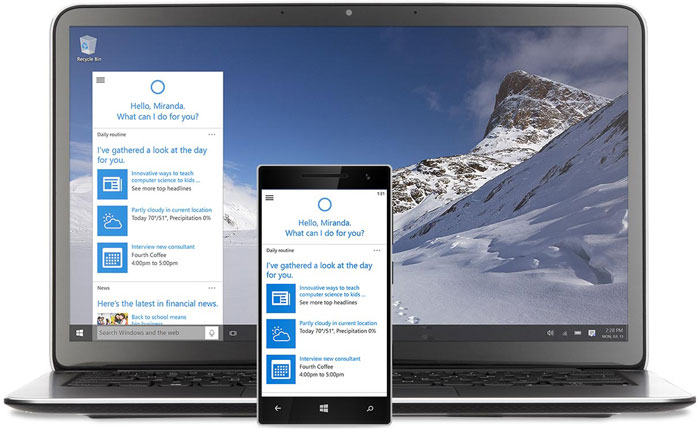Microsoft Windows 10 Pro and Home pricing and availability confirmed
Hello World!
Microsoft has finally confirmed the official release date for Windows 10 Home and Professional, as well as the official pricing. For Windows insiders who already are running Windows 10 on their machines, or Windows Phone users, Cortana has also been tasked with carrying the good news.

Microsoft Windows 10’s initial wave, will hit 190 countries worldwide, and will be available to around 1.5 billion Windows users. Many of those users will also be able to upgrade for free, as long as they run genuine copies of Windows 7 or Windows 8.1.
For those who cannot upgrade, such as Windows XP users, or users of non-genuine copies of Windows, the pricing has been made public on a
Windows community thread: the price for Windows 10 Home will be $119, while the Pro edition will be $199.
Owners of Windows 10 Home can also upgrade to Pro, by purchasing a “Pro Pack” for an additional $99.
Windows 7 and 8.1 users who wish to upgrade for free, will have the opportunity to do so within a year from the official release of Windows 10.
One Windows for each OEM device
In its simplest interpretation, the free upgrade to Windows 10 comes with no caveats, and it will be active and kept up to date for the lifetime of the device.
The upgrade to Windows 10 from OEM devices will be most likely device-centric, which means that, once a device has been upgraded to Windows 10, that device will be bound to that copy of Windows 10, which won’t accept further activations anywhere else.
This only means that if a user purchased a laptop with Windows 8.1, and the version of Windows 8.1 is an OEM version bound to that laptop, upgrading to Windows 10 will extend that license for the lifetime of the device.
This means that if a user plans to upgrade a custom system often, for instance when upgrading from HDD to SSD, or when replacing a mainboard or a graphic card, the likely scenario would be that that user will be able to perform a clean install, by providing the previous activation information from Windows 7 or 8.1, only up to July 29 2016. After that, the user will have to purchase a retail copy of Windows 10.
However, if a user already owns a full retail copy of Windows 7 or Windows 8.1, that user will likely get a full retail upgrade of Windows 10 that should be able to install on any device.